
In a dramatic escalation of military posturing, Russian President Vladimir Putin has deployed strategic nuclear bombers, prompting urgent warnings from the United Nations that the world may be teetering on the brink of a third global conflict. These actions unfold amid heightened tensions across Eastern Europe, with the United Kingdom stepping up to reinforce Nato’s eastern defenses in response to what is increasingly seen as a direct challenge to the Western alliance. The gravity of the situation is underscored by a series of provocative military drills and deployments that have put European nations and the international community on high alert.
This recent surge in Russian military activity encompasses a broad spectrum of aggressive maneuvers, from the redeployment of long-range nuclear-capable aircraft and the positioning of advanced missile systems near NATO borders to large-scale war games simulating hostile engagements. The Kremlin’s actions, often accompanied by strong rhetoric, are consistently interpreted by many international observers as a deliberate show of force aimed at asserting dominance and challenging the established geopolitical order. Such developments necessitate a thorough understanding of the specific actions taken and their far-reaching implications for global stability.
This article provides an in-depth analysis of the initial and most immediate aspects of this escalating crisis. It will meticulously detail the strategic deployment of Russia’s nuclear-capable bombers, the comprehensive Zapad-2025 military exercises, the alarming placement of Iskander missile systems, and the direct incursions by Russian drones into NATO airspace. Furthermore, it will explore the grave warnings issued by the United Nations and Ukraine, as well as the robust defensive measures undertaken by NATO and the United Kingdom to counter these perceived threats.
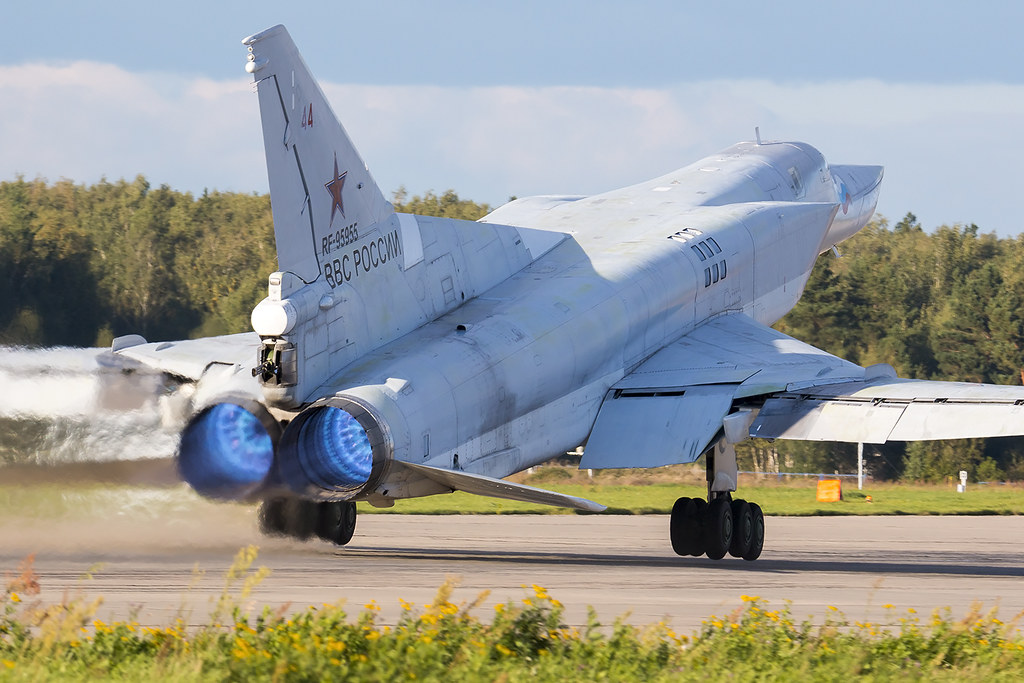
1. **The Strategic Deployment of Nuclear-Capable Bombers**
The deployment of Russia’s strategic nuclear bombers represents one of the most visible and concerning elements of the current military escalation. Vladimir Putin has launched Tu-22M3 aircraft in a renewed show of aggression, which the UN Security Council warned could escalate into global conflict. Footage released by the Kremlin showcased long-range aviation forces carrying out an air strike on a ‘simulated’ enemy, with the explicit aim of ‘disrupting the control system and destroying critical objects.’ This demonstration of capability, particularly with aircraft designed for nuclear strikes, sends an unambiguous message of intent and readiness.
Further compounding these concerns, Russian President Vladimir Putin has reportedly redeployed at least four Tu-95MS nuclear-capable bombers closer to Europe. These aircraft, often utilized in airstrikes against Ukraine, have been relocated from Russia’s Far East Ukrainka air base to Olenya and Engels-2 bases, strategically positioning them significantly closer to the European continent. Some reports indicate that these bombers are armed with cruise missiles, which amplifies the apprehension regarding a potential large-scale offensive and highlights a strategic recalibration by Moscow.
The Tu-95MS bombers are relics of the Cold War era, specifically designed for nuclear strikes, with one notably dropping the Tsar Bomba, the most powerful nuclear weapon ever detonated. In addition to these, two Tu-22M3 long-range bombers, also equipped for nuclear warfare, flew over the Baltic Sea, an area increasingly referred to as ‘NATO lake’ following Finland and Sweden’s entry into the alliance. These flights, described by Russian military officials as part of training exercises, involved the Tu-95MS in drills and the Tu-22s providing escort, conducted over the Barents and Norwegian Seas, which border several NATO countries. The German air force, the Luftwaffe, confirmed deploying Eurofighter Typhoons from Latvia to intercept the Russian planes, which were subsequently ‘handed over’ to on-duty Swedish squadrons, underscoring the immediate defensive responses these deployments provoke.
Military equipment: Strategic bomber
Categories: All articles needing additional references, All articles with unsourced statements, All articles with vague or ambiguous time, Articles needing additional references from June 2025, Articles with short description
Summary: A strategic bomber is a medium-to-long-range penetration bomber aircraft designed to drop large amounts of air-to-ground weaponry onto a distant target for the purposes of debilitating the enemy’s capacity to wage war. Unlike tactical bombers, penetrators, fighter-bombers, and attack aircraft, which are used in air interdiction operations to attack enemy combatants and military equipment, strategic bombers are designed to fly into enemy territory to destroy strategic targets (e.g., infrastructure, logistics, military installations, factories, etc.). In addition to strategic bombing, strategic bombers can be used for tactical missions. There are currently only three countries that operate strategic bombers: the United States, Russia and China.
The modern strategic bomber role appeared after strategic bombing was widely employed, and atomic bombs were first used during World War II. Nuclear strike missions (i.e., delivering nuclear-armed missiles or bombs) can potentially be carried out by most modern fighter-bombers and strike fighters, even at intercontinental range, with the use of aerial refueling, so any nation possessing this combination of equipment and techniques theoretically has such capability. Primary delivery aircraft for a modern strategic bombing mission need not always necessarily be a heavy bomber type, and any modern aircraft capable of nuclear strikes at long range is equally able to carry out tactical missions with conventional weapons. An example is France’s Mirage IV, a small strategic bomber replaced in service by the ASMP-equipped Mirage 2000N fighter-bomber and Rafale multirole fighter.
Get more information about: Strategic bomber
Read more about: The Dragon’s Ascent: Unpacking China’s Modern Military and Expanding Global Reach by 2025
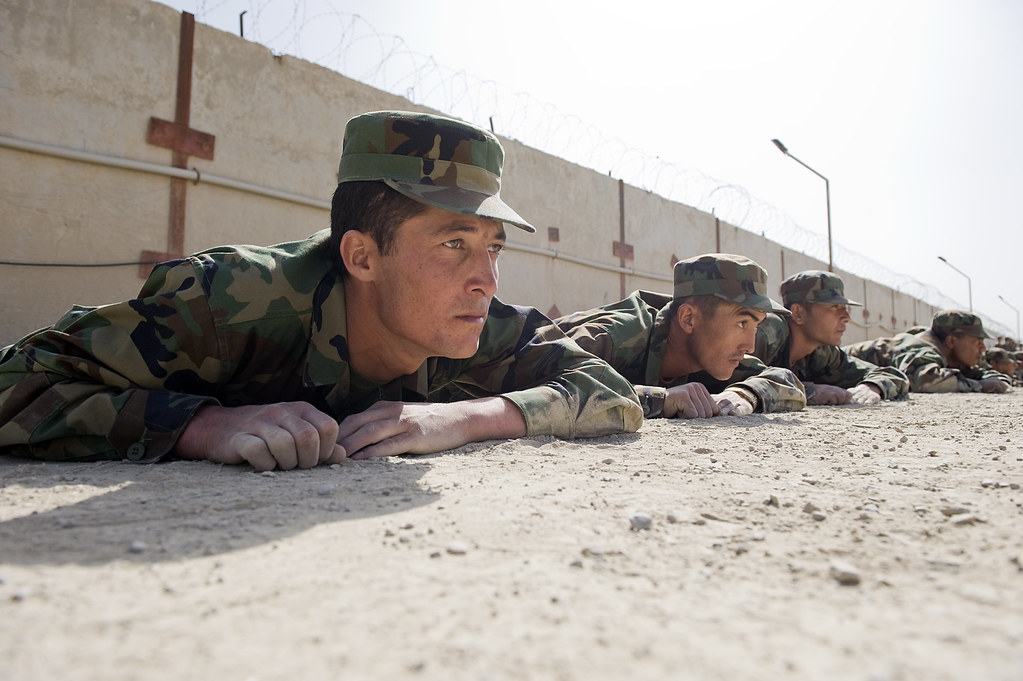
2. **The Zapad-2025 Military Drills**
Putin’s deployment of nuclear bombers coincides with its four-day Zapad-2025 exercises, which are annual drills conducted across the Arctic, Belarus, and Russia. These comprehensive war games are designed to test the defensive readiness of the Union State, the alliance between Russia and Belarus, but are widely interpreted as a direct challenge to NATO in all three locations. The scope and scale of these exercises are substantial, involving a vast array of military assets and personnel, and reflecting a concerted effort to project military power.
Critically, the war games also include troops drilling the use of nuclear missiles from Belarus, described as the ‘West’s doorstep.’ This specific aspect of the drills is particularly alarming, as it involves the preparation for deploying Russia’s ‘super-weapon,’ the ballistic missile Oreshnik, in Belarus. Given that Belarus borders NATO alliance states Poland, Lithuania, and Latvia, as well as Ukraine, the prospect of nuclear missile drills in such close proximity significantly heightens regional tensions and global security concerns.
The exercises are not confined to land-based operations; they also involve considerable naval and air force components. The Russian-Belarusian war games saw a dozen warships from Putin’s Baltic Sea Fleet engaged in drills with Su-30SM and Su-24M aircraft, and Mi-8 helicopters, against a mock enemy. These ‘combat ships operating within tactical groups will practice their designated tasks—encompassing anti-submarine warfare, air defence, and mine countermeasures—and will also execute missile and artillery strikes against various surface and aerial targets,’ according to a statement from the Russian defence ministry. Such comprehensive exercises involve large landing ships, corvettes, small missile and anti-submarine vessels, minesweepers, missile boats, and submarines, showcasing a full spectrum of military readiness.
Military equipment: Zapad 2025
Title: Zapad 2025
Date: Date range
Place: Belarus, Russia
Howmany1: ~13,000
Categories: 2025 in Belarus, All articles with links needing disambiguation, Articles containing Belarusian-language text, Articles containing Russian-language text, Articles with links needing disambiguation from September 2025
Summary: Zapad 2025 (Russian: Запад-2025, Belarusian: Захад-2025, romanized: Zakhad-2025, lit. ’West 2025′) is a Russian-Belarusian joint strategic military exercise, taking place in Belarus on 12–16 September 2025 or 1–17 September 2025. Belarus has said the drills will test the Union State’s defensive readiness, with main activities staged at central training areas near Barysaw and a reciprocal movement of units between the two states. It will be the first Zapad exercise since Russia’s full-scale invasion of Ukraine in 2022; authorities describe a scaled-down format and locations deeper inside Belarus.
Belarus has indicated an official participation figure of roughly 13,000 personnel, substantially fewer than the ~200,000 claimed for Zapad 2021. Analysts note that headline figures in past iterations sometimes understate the true scale and dispersal of activity; some commentaries anticipate higher effective numbers across parallel events.
The exercises are conducted on multiple bases in Belarus and Russia, including the Kaliningrad oblast enclave.
Belarusian officials say the exercise will include training related to nuclear weapons employment and practice involving Russia’s Oreshnik missile system, described as nuclear-capable and slated for delivery to Belarus by late 2025.
Minsk states that it has invited all 56 states under the OSCE Vienna Document to observe, plus additional partners, including NATO countries and accredited military attachés, with responses requested by 20 August 2025.
Get more information about: Zapad 2025
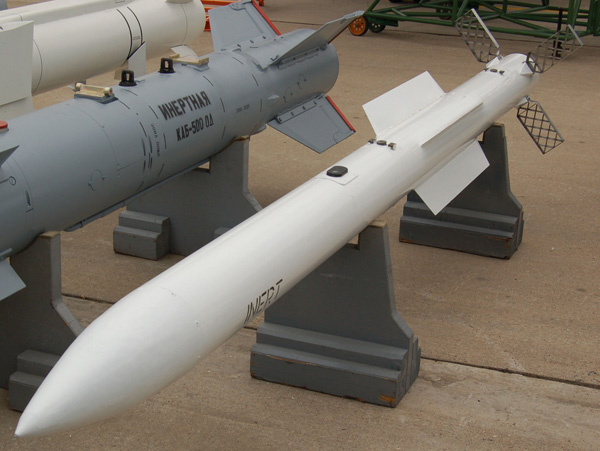
3. **Deployment of Nuclear-Capable Iskander Missile Systems**
Just days after the aforementioned drone incidents, Putin further taunted the West by deploying hulking nuclear-capable Iskander missile launchers close to Russia’s border with Poland. This move marks another significant escalation, placing advanced offensive capabilities directly on NATO’s periphery. The presence of such systems is a clear signal of Russia’s willingness to project force and maintain an assertive posture in the region, directly challenging the security interests of neighboring NATO members.
Footage showed at least two Iskander-M short-range ballistic missile systems on a highway reportedly close to the Polish border in the Russian enclave of Kaliningrad, which sits on the Baltic Sea and is also neighbored by Lithuania. The road had been closed specifically for this deployment, indicating a deliberate and highly coordinated military action. These missile systems are capable of carrying both nuclear or conventional warheads, making them a dual-threat asset in Russia’s arsenal and enhancing their strategic utility in a complex security environment.
The capabilities of the Iskander-M missiles are particularly concerning; they have a range of at least 310 miles and can carry 10–50 kiloton nuclear warheads, comparable to the Hiroshima–Nagasaki bombs. This range directly puts NATO capitals such as Warsaw, Vilnius, Riga, and potentially Tallinn and Berlin within striking distance. While Moscow offered no immediate explanation for the Iskander-M move, it was apparent that these deployments were conducted as part of the ongoing Zapad-2025 war games, underscoring the integrated nature of Russia’s military provocations and drills.
Military equipment: 9K720 Iskander
IsMissile: true
Name: 9K720 Iskander , SS-26 Stone
Caption: MZKT-7930,transporter erector launcher
Origin: Russia
Type: Short-range ballistic missile
Service: 2006–present
VehicleRange: convert
Filling: convert,thermonuclear weapon,High explosive
Engine: Single-stage solid propellant
Guidance: Inertial guidance,optical,DSMAC
Accuracy: convert
Speed: 2000 m
Abbr: on
Length: 7.3 m
Diameter: 0.92 m
Weight: 3800 kg
PayloadCapacity: 480 kg
Manufacturer: Votkinsk Plant State Production Association
DesignDate: Fri Jan 01 1988 00:00:00 GMT-0800 (Pacific Standard Time)
UnitCost: [object Object]
UsedBy: Russian Ground Forces,Armenian Armed Forces,Algerian People’s National Army,Armed Forces of Belarus
LaunchPlatform: Mobile transporter erector launcher
Wars: Russo-Georgian War,Syrian Civil War,Second Nagorno-Karabakh War, Russian invasion of Ukraine
Categories: All articles lacking reliable references, All articles with specifically marked weasel-worded phrases, All articles with unsourced statements, Articles containing Russian-language text, Articles lacking reliable references from June 2025
Summary: The 9K720 Iskander (Russian: «Искандер»; NATO reporting name SS-26 Stone) is a Russian mobile short-range ballistic missile system. It has a range of 500 kilometres (270 nmi; 310 mi). It was intended to replace the OTR-21 Tochka in the Russian military by 2020.
The Iskander has several different conventional warheads, including a cluster munitions warhead, a fuel–air explosive enhanced-blast warhead, a high-explosive fragmentation warhead, an earth penetrator for bunker busting and an electromagnetic pulse device for anti-radar missions. The missile can also carry nuclear warheads. In September 2017, the KB Mashinostroyeniya (KBM) general designer Valery M. Kashin said that there were at least seven types of missiles (and “perhaps more”) for Iskander, including one cruise missile.
Get more information about: 9K720 Iskander
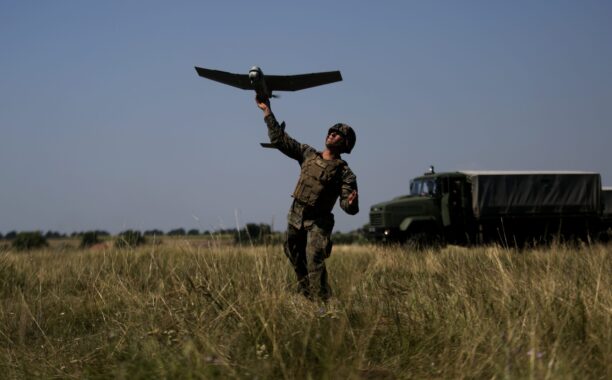
4. **Russian Drone Incursions into NATO Airspace**
The direct violation of NATO airspace by Russian drones represents a critical incident in the recent escalation, illustrating Russia’s willingness to test the alliance’s boundaries. Earlier this week, the Kremlin flew attack drones into Polish airspace, which Poland had to shoot down on Tuesday night with the help of its NATO allies. This incident was not isolated; Russia had previously flown attack drones into Polish air space which were also shot down by alliance fighters, with one particular instance involving a Russian drone overflying Romania for 50 minutes.
These drone incursions, described as involving ‘suicide drones’ that violated Polish airspace, triggered Article 4 of the NATO treaty, which allows any member country to bring any issue of concern, especially security, to the attention of the North Atlantic Council for consultation. This activation of Article 4 underscores the seriousness with which NATO perceived these airspace violations, prompting urgent discussions and a collective response to what was deemed a reckless and dangerous act.
The immediate consequence of these provocations was NATO being forced to urgently strengthen its eastern defenses, efforts in which the UK committed to join. The repeated incursions also raised significant questions within the alliance about whether foreign drones should even be able to enter its airspace, and how well equipped NATO is to deal with such evolving threats. The incident highlighted a vulnerability that NATO is now actively working to address, including the deployment of elements specifically designed to tackle the ‘particular challenges associated with the use of drones,’ as later detailed by NATO Secretary-General Mark Rutte.
Military equipment: 2025 Russian drone incursion into Poland
Partof: Russian invasion of Ukraine
Caption: Relevance inline
Map: Location map many
Width: 350
Float: center
Border: none
Alt: Locations of Drones
Relief: true
Label1: Cześniki
Label1Size: 60
Position1: right
Mark1: Blue pog.svg
Mark1size: 5
Link1: Cześniki
Lat1Deg: 50
Lat1Min: 43
Lat1Sec: 0
Lat1Dir: N
Lon1Deg: 23
Lon1Min: 27
Lon1Sec: 0
Lon1Dir: E
Label2: Czosnówka
Label2Size: 60
Position2: top
Mark2: Blue pog.svg
Mark2size: 5
Link2: Czosnówka
Lat2Deg: 52
Lat2Min: 0
Lat2Sec: 0
Lat2Dir: N
Lon2Deg: 23
Lon2Min: 13
Lon2Sec: 0
Lon2Dir: E
Label3: Krzywowierzba-Kolonia
Label3Size: 60
Position3: top
Mark3: Blue pog.svg
Mark3size: 5
Link3: Krzywowierzba-Kolonia
Lat3Deg: 51
Lat3Min: 36
Lat3Sec: 0
Lat3Dir: N
Lon3Deg: 23
Lon3Min: 08
Lon3Sec: 0
Lon3Dir: E
Label4: Wielki Łan
Label4Size: 60
Position4: left
Mark4: Blue pog.svg
Mark4size: 5
Link4: Wielki Łan
Lat4Deg: 51
Lat4Min: 28
Lat4Sec: 58
Lat4Dir: N
Lon4Deg: 23
Lon4Min: 12
Lon4Sec: 19
Lon4Dir: E
Label5: Wohyń
Label5Size: 60
Position5: left
Mark5: Blue pog.svg
Mark5size: 5
Link5: Wohyń
Lat5Deg: 51
Lat5Min: 45
Lat5Sec: 0
Lat5Dir: N
Lon5Deg: 22
Lon5Min: 47
Lon5Sec: 0
Lon5Dir: E
Label6: Wyhalew
Label6Size: 60
Position6: left
Mark6: Blue pog.svg
Mark6size: 5
Link6: Wyhalew
Lat6Deg: 51
Lat6Min: 37
Lat6Sec: 6
Lat6Dir: N
Lon6Deg: 23
Lon6Min: 9
Lon6Sec: 56
Lon6Dir: E
Label7: Wyryki-Wola
Label7Size: 60
Position7: bottom
Mark7: Blue pog.svg
Mark7size: 5
Link7: Wyryki-Wola
Lat7Deg: 51
Lat7Min: 34
Lat7Sec: 0
Lat7Dir: N
Lon7Deg: 23
Lon7Min: 23
Lon7Sec: 0
Lon7Dir: E
Label8: Mniszków
Label8Size: 60
Position8: left
Mark8: Blue pog.svg
Mark8size: 5
Link8: Mniszków, Łódź Voivodeship
Lat8Deg: 51
Lat8Min: 22
Lat8Sec: 15
Lat8Dir: N
Lon8Deg: 20
Lon8Min: 2
Lon8Sec: 3
Lon8Dir: E
Label9: Oleśno
Label9Size: 60
Position9: right
Mark9: Blue pog.svg
Mark9size: 5
Link9: Oleśno
Lat9Deg: 54
Lat9Min: 4
Lat9Sec: 46
Lat9Dir: N
Lon9Deg: 19
Lon9Min: 17
Lon9Sec: 13
Lon9Dir: E
Label10: Kaliningrad (Russia)
Label10Size: 80
Position10: right
Mark10: Blue pog.svg
Mark10size: 0
Link10: Kaliningrad
Lat10Deg: 54
Lat10Min: 42
Lat10Sec: 01
Lat10Dir: N
Lon10Deg: 20
Lon10Min: 27
Lon10Sec: 11
Lon10Dir: E
Label11: Ukraine
Label11Size: 80
Position11: right
Mark11: Blue pog.svg
Mark11size: 0
Link11: Ukraine
Lat11Deg: 49
Lat11Min: 30
Lat11Sec: 0
Lat11Dir: N
Lon11Deg: 23
Lon11Min: 0
Lon11Sec: 0
Lon11Dir: E
Label12: Bychawka Trzecia
Label12Size: 60
Position12: right
Mark12: Blue pog.svg
Mark12size: 5
Link12: Bychawka Trzecia
Lat12Deg: 51
Lat12Min: 4
Lat12Sec: 23
Lat12Dir: N
Lon12Deg: 22
Lon12Min: 31
Lon12Sec: 43
Lon12Dir: E
Label13: Zabłocie-Kolonia
Label13Size: 60
Position13: right
Mark13: Blue pog.svg
Mark13size: 5
Link13: Zabłocie-Kolonia
Lat13Deg: 51
Lat13Min: 50
Lat13Sec: 26
Lat13Dir: N
Lon13Deg: 23
Lon13Min: 34
Lon13Sec: 38
Lon13Dir: E
Label14: Rabiany
Label14Size: 60
Position14: left
Mark14: Blue pog.svg
Mark14size: 5
Link14: Rabiany
Lat14Deg: 52
Lat14Min: 24
Lat14Sec: 48
Lat14Dir: N
Lon14Deg: 21
Lon14Min: 47
Lon14Sec: 12
Lon14Dir: E
Label15: Nowe Miasto nad Pilicą
Label15Size: 60
Position15: right
Mark15: Blue pog.svg
Mark15size: 5
Link15: Nowe Miasto nad Pilicą
Lat15Deg: 51
Lat15Min: 37
Lat15Sec: 10
Lat15Dir: N
Lon15Deg: 20
Lon15Min: 34
Lon15Sec: 34
Lon15Dir: E
Label16: Czyżów
Label16Size: 60
Position16: left
Mark16: Blue pog.svg
Mark16size: 5
Link16: Czyżów, Busko County
Lat16Deg: 50
Lat16Min: 28
Lat16Sec: 38
Lat16Dir: N
Lon16Deg: 20
Lon16Min: 59
Lon16Sec: 39
Lon16Dir: E
Label17: Smyków
Label17Size: 60
Position17: left
Mark17: Blue pog.svg
Mark17size: 5
Link17: Smyków, Gmina Raków
Lat17Deg: 50
Lat17Min: 42
Lat17Sec: 46
Lat17Dir: N
Lon17Deg: 20
Lon17Min: 53
Lon17Sec: 30
Lon17Dir: E
Label18: Sobótka
Label18Size: 60
Position18: right
Mark18: Blue pog.svg
Mark18size: 5
Link18: Sobótka, Opatów County
Lat18Deg: 50
Lat18Min: 47
Lat18Sec: 45
Lat18Dir: N
Lon18Deg: 21
Lon18Min: 40
Lon18Sec: 30
Lon18Dir: E
MapCaption: Unmanned aerial vehicle
Date: 9–10 September 2025
Time: 23:30–06:45
Timezone: Central European Summer Time
Duration: 7 hours 15 minutes
Location: Poland
Type: military drone
Motive: Unknown
Outcome: One house damaged.,Article 4 of the North Atlantic Treaty,Poland restricts the airspace along its eastern border.,Eastern Sentry
BlankLabel: Countries involved
BlankData: Flag
Categories: 2025 in Poland, 2025 in international relations, 21st-century aircraft shootdown incidents, 21st-century military history of Poland, Aerial warfare in the Russian invasion of Ukraine
Summary: On 9 September 2025, at approximately 11:30 p.m. CEST, 19 to 23 drones entered Poland’s airspace after allegedly being launched from Russia. The incursion triggered a Quick Reaction Alert by the Polish Air Force and other NATO militaries who scrambled aircraft, and up to four drones were confirmed to have been shot down, most of them by the Dutch Air Force. Poland’s prime minister Donald Tusk said that the drones “posed a direct threat” and had been shot down. The airspace over Warsaw International Airport, Warsaw Modlin Airport, Rzeszów–Jasionka Airport, and Lublin Airport was closed while the Russian drone fleet was in Polish airspace.
Shortly thereafter, the Polish government invoked Article 4, with Polish deputy prime minister Radosław Sikorski stating “We are dealing with an unprecedented case of an attack not only on the territory of Poland but also on the territory of NATO and the EU”. In the aftermath of the incident, Russia and Belarus conducted joint military exercises, the largest since the start of the Russian invasion of Ukraine.
Get more information about: 2025 Russian drone incursion into Poland
Read more about: China’s Evolving Arsenal: A Deep Dive into the Weapons Redefining Modern Warfare
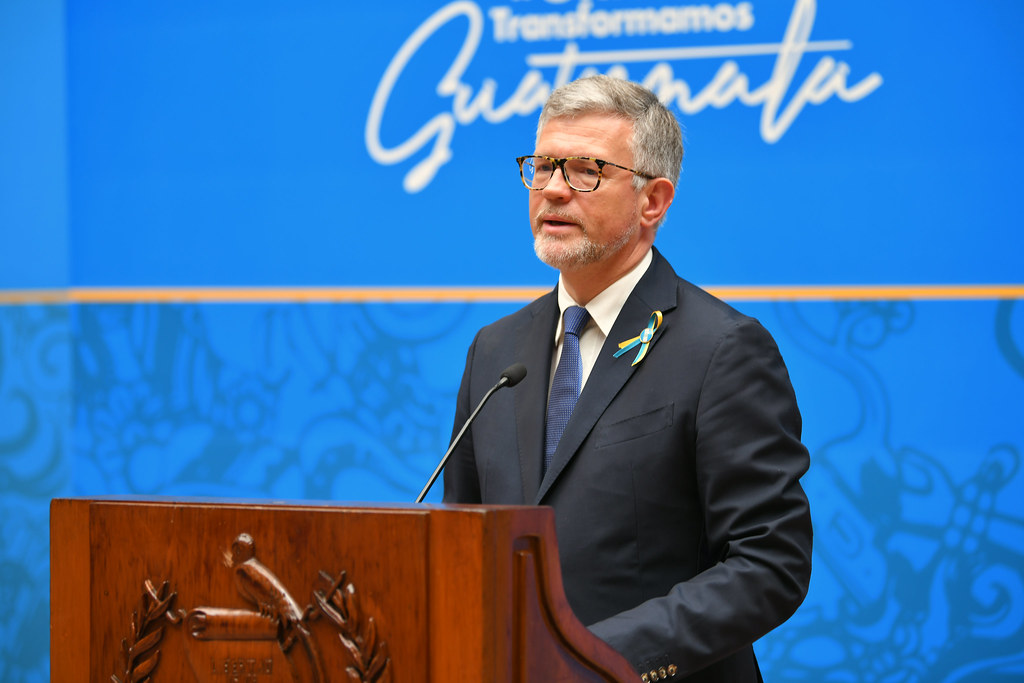
5. **The United Nations and Ukraine’s Grave Warnings**
The international community’s alarm at Russia’s escalating military activities has been vociferously articulated by the United Nations and Ukraine, delivering stark warnings about the potential for global catastrophe. The UN Security Council has explicitly warned that the world is ‘staring into the abyss of a Third World War,’ a sentiment echoed by Ukraine’s permanent representative to the UN, Andriy Melnyk. Melnyk cautioned that if Putin’s escalation is not halted, ‘tomorrow it could be drones or even missiles falling on Berlin, Paris, or London.’
Melnyk’s warnings extended further, suggesting that ‘the day after, who knows, something might even “accidentally” cross the Atlantic,’ emphasizing the grave and unpredictable nature of the current geopolitical climate. He vehemently condemned Russia’s actions, stating, ‘Russia is not mocking this council. It is spitting in your face,’ highlighting a profound disregard for international norms and diplomatic bodies. These pronouncements underscore a deep concern that the conflict could spiral far beyond its current scope, impacting nations across continents.
These grave warnings are further complicated by the Kremlin’s apparent disinterest in de-escalation or peace. Putin’s spokesman has signaled that peace negotiations with Ukraine were now on ‘pause,’ indicating a lack of diplomatic momentum and a preference for continued military assertiveness. This stance reinforces the perception that Russia is unwilling to seek a settlement in the ongoing conflict, thereby exacerbating fears that the current trajectory of military deployments and provocations could indeed lead the world into an unprecedented era of widespread conflict.
Military equipment: United States and the Russian invasion of Ukraine
Categories: 2020s in the United States, All articles with unsourced statements, Articles containing video clips, Articles with short description, Articles with unsourced statements from July 2024
Summary: The United States has supported Ukraine during the ongoing Russian invasion of Ukraine. The invasion, which began on February 24, 2022, was condemned by the Biden administration, which provided military, financial, and humanitarian aid to Ukraine, and imposed sanctions against Russia and Belarus. However, the second Trump administration since 2025 has proposed a peace deal and increasingly sought to distance itself from financially supporting Ukrainian resistance.
The United States has provided around half of all military aid to Ukraine. Between January 2022 to December 2024, according to the Kiel Institute, The US has spent $119.7 billion on activities related to the Russian invasion, and on other activities including supporting increased US–European presence, Ukrainian refugees in the US, and global food insecurity. According to the Council on Foreign Relations, by the end of September 2024 the United States had allocated $175 billion, related to the invasion of Russia, $106 billion of which went into direct aid to Ukraine, whilst $69 billion remained in the US economy to support US industries. There are several ways by which the US provides military and financial aid to Ukraine. Most of the military aid is old American weaponry and equipment from US reserve stockpiles; Presidential Drawdown Authority (PDA) allows the president to order the sending of this weaponry. American military contractors are then funded to make weapons to re-fill stockpiles. The Ukraine Security Assistance Initiative (USAI) funds the US Department of Defense to help train and advise the Ukrainian military, as well as to procure weaponry and equipment. The State Department’s Foreign Military Financing (FMF) program helps allies like Ukraine buy weaponry and equipment from American manufacturers. Lastly, the US also sent some direct financial aid to the Ukrainian government through the United States Agency for International Development (USAID).
The Biden administration also imposed limits on the supply and use of some American weapons. For more than two years, it forbade Ukraine to fire American weapons, like the Army Tactical Missile System (ATACMS), at military targets inside Russia. From June 2024, it allowed Ukraine to strike inside Russia with US-supplied weapons, but only near the border in self-defense. On March 3, 2025, following disagreements during the 2025 Trump–Zelenskyy meeting, the second Trump administration paused all military aid to Ukraine. However, on March 11, 2025, U.S. military aid to Ukraine resumed after Ukraine agreed to a potential ceasefire.
Get more information about: United States and the Russian invasion of Ukraine

6. **NATO and UK Bolster Eastern Defences**
In direct response to Russia’s escalating military provocations, NATO has moved swiftly to reinforce its eastern defenses, recognizing the imperative to protect its member states and deter further aggression. The alliance was forced to urgently strengthen its eastern defenses, efforts that the United Kingdom has pledged to support. This collective commitment underlines the solidarity and resolve within NATO to confront emerging threats and maintain regional stability.
NATO Secretary-General Mark Rutte announced on Friday that military activity under ‘Eastern Sentry’ would commence in the coming days. This operation is set to involve assets from the UK, as well as allies including France and Germany, demonstrating a united front against Russian assertiveness. Rutte highlighted that ‘in addition to more traditional military capabilities, this effort will also feature elements designed to address the particular challenges associated with the use of drones,’ signaling an adaptive strategy to contemporary threats and a comprehensive enhancement of defensive capabilities.
A Ministry of Defence spokesperson affirmed the UK’s robust commitment, stating, ‘The UK is fully committed to playing our part in Nato’s Eastern Sentry following the reckless and dangerous airspace violations by Russia. We will provide further detail on the UK Armed Forces contribution soon.’ In parallel, Poland and allied NATO countries have significantly boosted their forces, deploying approximately 40,000 troops close to the border with Belarus due to the Zapad-2025 war games. This substantial troop presence is intended to provide a credible deterrent and ensure readiness for any potential provocations that might occur during the ongoing military exercises, echoing the warning from Chief of the Belarus General Staff Pavel Muraveiko who stated, ‘We are vigilantly monitoring all military activities near our borders and stand ready to counter any provocations that might occur during Zapad-2025.’
Military equipment: 2025 Russian drone incursion into Poland
Partof: Russian invasion of Ukraine
Caption: Relevance inline
Map: Location map many
Width: 350
Float: center
Border: none
Alt: Locations of Drones
Relief: true
Label1: Cześniki
Label1Size: 60
Position1: right
Mark1: Blue pog.svg
Mark1size: 5
Link1: Cześniki
Lat1Deg: 50
Lat1Min: 43
Lat1Sec: 0
Lat1Dir: N
Lon1Deg: 23
Lon1Min: 27
Lon1Sec: 0
Lon1Dir: E
Label2: Czosnówka
Label2Size: 60
Position2: top
Mark2: Blue pog.svg
Mark2size: 5
Link2: Czosnówka
Lat2Deg: 52
Lat2Min: 0
Lat2Sec: 0
Lat2Dir: N
Lon2Deg: 23
Lon2Min: 13
Lon2Sec: 0
Lon2Dir: E
Label3: Krzywowierzba-Kolonia
Label3Size: 60
Position3: top
Mark3: Blue pog.svg
Mark3size: 5
Link3: Krzywowierzba-Kolonia
Lat3Deg: 51
Lat3Min: 36
Lat3Sec: 0
Lat3Dir: N
Lon3Deg: 23
Lon3Min: 08
Lon3Sec: 0
Lon3Dir: E
Label4: Wielki Łan
Label4Size: 60
Position4: left
Mark4: Blue pog.svg
Mark4size: 5
Link4: Wielki Łan
Lat4Deg: 51
Lat4Min: 28
Lat4Sec: 58
Lat4Dir: N
Lon4Deg: 23
Lon4Min: 12
Lon4Sec: 19
Lon4Dir: E
Label5: Wohyń
Label5Size: 60
Position5: left
Mark5: Blue pog.svg
Mark5size: 5
Link5: Wohyń
Lat5Deg: 51
Lat5Min: 45
Lat5Sec: 0
Lat5Dir: N
Lon5Deg: 22
Lon5Min: 47
Lon5Sec: 0
Lon5Dir: E
Label6: Wyhalew
Label6Size: 60
Position6: left
Mark6: Blue pog.svg
Mark6size: 5
Link6: Wyhalew
Lat6Deg: 51
Lat6Min: 37
Lat6Sec: 6
Lat6Dir: N
Lon6Deg: 23
Lon6Min: 9
Lon6Sec: 56
Lon6Dir: E
Label7: Wyryki-Wola
Label7Size: 60
Position7: bottom
Mark7: Blue pog.svg
Mark7size: 5
Link7: Wyryki-Wola
Lat7Deg: 51
Lat7Min: 34
Lat7Sec: 0
Lat7Dir: N
Lon7Deg: 23
Lon7Min: 23
Lon7Sec: 0
Lon7Dir: E
Label8: Mniszków
Label8Size: 60
Position8: left
Mark8: Blue pog.svg
Mark8size: 5
Link8: Mniszków, Łódź Voivodeship
Lat8Deg: 51
Lat8Min: 22
Lat8Sec: 15
Lat8Dir: N
Lon8Deg: 20
Lon8Min: 2
Lon8Sec: 3
Lon8Dir: E
Label9: Oleśno
Label9Size: 60
Position9: right
Mark9: Blue pog.svg
Mark9size: 5
Link9: Oleśno
Lat9Deg: 54
Lat9Min: 4
Lat9Sec: 46
Lat9Dir: N
Lon9Deg: 19
Lon9Min: 17
Lon9Sec: 13
Lon9Dir: E
Label10: Kaliningrad (Russia)
Label10Size: 80
Position10: right
Mark10: Blue pog.svg
Mark10size: 0
Link10: Kaliningrad
Lat10Deg: 54
Lat10Min: 42
Lat10Sec: 01
Lat10Dir: N
Lon10Deg: 20
Lon10Min: 27
Lon10Sec: 11
Lon10Dir: E
Label11: Ukraine
Label11Size: 80
Position11: right
Mark11: Blue pog.svg
Mark11size: 0
Link11: Ukraine
Lat11Deg: 49
Lat11Min: 30
Lat11Sec: 0
Lat11Dir: N
Lon11Deg: 23
Lon11Min: 0
Lon11Sec: 0
Lon11Dir: E
Label12: Bychawka Trzecia
Label12Size: 60
Position12: right
Mark12: Blue pog.svg
Mark12size: 5
Link12: Bychawka Trzecia
Lat12Deg: 51
Lat12Min: 4
Lat12Sec: 23
Lat12Dir: N
Lon12Deg: 22
Lon12Min: 31
Lon12Sec: 43
Lon12Dir: E
Label13: Zabłocie-Kolonia
Label13Size: 60
Position13: right
Mark13: Blue pog.svg
Mark13size: 5
Link13: Zabłocie-Kolonia
Lat13Deg: 51
Lat13Min: 50
Lat13Sec: 26
Lat13Dir: N
Lon13Deg: 23
Lon13Min: 34
Lon13Sec: 38
Lon13Dir: E
Label14: Rabiany
Label14Size: 60
Position14: left
Mark14: Blue pog.svg
Mark14size: 5
Link14: Rabiany
Lat14Deg: 52
Lat14Min: 24
Lat14Sec: 48
Lat14Dir: N
Lon14Deg: 21
Lon14Min: 47
Lon14Sec: 12
Lon14Dir: E
Label15: Nowe Miasto nad Pilicą
Label15Size: 60
Position15: right
Mark15: Blue pog.svg
Mark15size: 5
Link15: Nowe Miasto nad Pilicą
Lat15Deg: 51
Lat15Min: 37
Lat15Sec: 10
Lat15Dir: N
Lon15Deg: 20
Lon15Min: 34
Lon15Sec: 34
Lon15Dir: E
Label16: Czyżów
Label16Size: 60
Position16: left
Mark16: Blue pog.svg
Mark16size: 5
Link16: Czyżów, Busko County
Lat16Deg: 50
Lat16Min: 28
Lat16Sec: 38
Lat16Dir: N
Lon16Deg: 20
Lon16Min: 59
Lon16Sec: 39
Lon16Dir: E
Label17: Smyków
Label17Size: 60
Position17: left
Mark17: Blue pog.svg
Mark17size: 5
Link17: Smyków, Gmina Raków
Lat17Deg: 50
Lat17Min: 42
Lat17Sec: 46
Lat17Dir: N
Lon17Deg: 20
Lon17Min: 53
Lon17Sec: 30
Lon17Dir: E
Label18: Sobótka
Label18Size: 60
Position18: right
Mark18: Blue pog.svg
Mark18size: 5
Link18: Sobótka, Opatów County
Lat18Deg: 50
Lat18Min: 47
Lat18Sec: 45
Lat18Dir: N
Lon18Deg: 21
Lon18Min: 40
Lon18Sec: 30
Lon18Dir: E
MapCaption: Unmanned aerial vehicle
Date: 9–10 September 2025
Time: 23:30–06:45
Timezone: Central European Summer Time
Duration: 7 hours 15 minutes
Location: Poland
Type: military drone
Motive: Unknown
Outcome: One house damaged.,Article 4 of the North Atlantic Treaty,Poland restricts the airspace along its eastern border.,Eastern Sentry
BlankLabel: Countries involved
BlankData: Flag
Categories: 2025 in Poland, 2025 in international relations, 21st-century aircraft shootdown incidents, 21st-century military history of Poland, Aerial warfare in the Russian invasion of Ukraine
Summary: On 9 September 2025, at approximately 11:30 p.m. CEST, 19 to 23 drones entered Poland’s airspace after allegedly being launched from Russia. The incursion triggered a Quick Reaction Alert by the Polish Air Force and other NATO militaries who scrambled aircraft, and up to four drones were confirmed to have been shot down, most of them by the Dutch Air Force. Poland’s prime minister Donald Tusk said that the drones “posed a direct threat” and had been shot down. The airspace over Warsaw International Airport, Warsaw Modlin Airport, Rzeszów–Jasionka Airport, and Lublin Airport was closed while the Russian drone fleet was in Polish airspace.
Shortly thereafter, the Polish government invoked Article 4, with Polish deputy prime minister Radosław Sikorski stating “We are dealing with an unprecedented case of an attack not only on the territory of Poland but also on the territory of NATO and the EU”. In the aftermath of the incident, Russia and Belarus conducted joint military exercises, the largest since the start of the Russian invasion of Ukraine.
Get more information about: 2025 Russian drone incursion into Poland
Read more about: Inside the US Army’s 250th Anniversary Parade: Tanks, Logistics, and Spectacle on the National Mall

7. **Intensified Russian Aerial Attacks on Ukraine**
The escalation of Russian military activity has manifested in a brutal intensification of aerial assaults on Ukraine, reaching unprecedented levels of ferocity. On a recent Sunday, Moscow executed its largest aerial attack on Ukraine since the war commenced, striking a pivotal government building in Kyiv for the first time. This unprecedented scale of bombardment underscores Russia’s unwavering commitment to its military objectives, regardless of the humanitarian cost.
The Air Force of the Armed Forces of Ukraine reported a staggering 582 aerial threats fired by Russia in a single night, including more than 500 Shahed-type strike drones and eight ballistic missiles. Furthermore, a total of 37 Kh-101, Kalibr, Iskander-K, and Kh-59 missiles were launched. This relentless barrage highlights a strategic effort to overwhelm Ukrainian air defenses and inflict widespread damage across the nation.
While 548 aerial targets were successfully shot down, five missiles and 24 strike drones managed to hit seven locations. The aftermath was dire, with debris from intercepted targets falling on 21 other sites, causing significant destruction. Reports tragically confirm one fatality and multiple injuries in Ukraine’s Zaporizhzhia region, where emergency services responded to a five-story residential building. Dozens, including children, were reported injured, revealing the profound human toll of these intensified attacks.
The Kyiv assault specifically resulted in 17 individuals being pulled from the rubble, among them four children, as stated by Interior Minister Ihor Klymenko. The youngest victim was a mere two-year-old girl, and over 50 people were wounded. Mr. Klymenko detailed a grueling 30-hour rescue operation, with thousands of personnel from the Interior Ministry’s agencies and units tirelessly working at the strike sites, rotating every few hours to manage the crisis. This relentless targeting of civilian and government infrastructure deepens the humanitarian crisis and stiffens Ukraine’s resolve.
Military equipment: Russian invasion of Ukraine
Categories: 2020s conflicts, 2020s controversies, 2020s in Europe, 2020s in Russia, 2020s in Ukraine
Summary: On 24 February 2022, Russia invaded Ukraine, starting the largest and deadliest war in Europe since World War II, in a major escalation of the conflict between the two countries which began in 2014. The fighting has caused hundreds of thousands of military casualties and tens of thousands of Ukrainian civilian casualties. As of 2025, Russian troops occupy about 20% of Ukraine. From a population of 41 million, about 8 million Ukrainians had been internally displaced and more than 8.2 million had fled the country by April 2023, creating Europe’s largest refugee crisis since World War II.
In late 2021, Russia massed troops near Ukraine’s borders and issued demands to the West including a ban on Ukraine ever joining the NATO military alliance. After repeatedly denying having plans to attack Ukraine, on 24 February 2022, Russian president Vladimir Putin announced a “special military operation”, saying that it was to support the Russian-backed breakaway republics of Donetsk and Luhansk, whose paramilitary forces had been fighting Ukraine in the war in Donbas since 2014. Putin espoused irredentist and imperialist views challenging Ukraine’s legitimacy as a state, baselessly claimed that the Ukrainian government were neo-Nazis committing genocide against the Russian minority in the Donbas, and said that Russia’s goal was to “demilitarise and denazify” Ukraine. Russian air strikes and a ground invasion were launched on a northern front from Belarus towards the capital Kyiv, a southern front from Crimea, and an eastern front from the Donbas and towards Kharkiv. Ukraine enacted martial law, ordered a general mobilisation, and severed diplomatic relations with Russia.
Russian troops retreated from the north and the outskirts of Kyiv by April 2022, after encountering stiff resistance and logistical challenges. The Bucha massacre was uncovered after their withdrawal. In the southeast, Russia launched an offensive in the Donbas and captured Mariupol after a destructive siege. Russia continued to bomb military and civilian targets far from the front, and struck the energy grid during winter months. In late 2022, Ukraine launched successful counteroffensives in the south and east, liberating most of Kharkiv Oblast. Soon after, Russia illegally annexed four partly-occupied provinces. In November, Ukraine liberated Kherson. In June 2023, Ukraine launched another counteroffensive in the southeast but made few gains. After small but steady Russian advances in the east in the first half of 2024, Ukraine launched a cross-border offensive into Russia’s Kursk Oblast in August, where North Korean soldiers were sent to assist Russia. The United Nations Human Rights Office reports that Russia is committing severe human rights violations in occupied Ukraine. The direct cost of the war for Russia has been over US$450 billion.
The invasion was met with widespread international condemnation. The United Nations General Assembly passed a resolution condemning the invasion and demanding a full Russian withdrawal. The International Court of Justice ordered Russia to halt military operations, and the Council of Europe expelled Russia. Many countries imposed sanctions on Russia and its ally Belarus and provided large-scale humanitarian and military aid to Ukraine. The Baltic states and Poland declared Russia a terrorist state. Protests occurred around the world, with anti-war protesters in Russia being met by mass arrests and greater media censorship. The Russian attacks on civilians have led to allegations of genocide. War-related disruption to Ukrainian agriculture and shipping contributed to a world food crisis; war-related local environmental damage has been described as ecocide and the war has heavily disrupted global climate policy. The International Criminal Court (ICC) opened an investigation into crimes against humanity, war crimes, abduction of Ukrainian children, and genocide against Ukrainians. The ICC issued arrest warrants for Putin and five other Russian officials.
Get more information about: Russian invasion of Ukraine
Read more about: Inside Ukraine’s Elite Operations: Strategic Raids and Key Strikes Against Russian Targets in Crimea
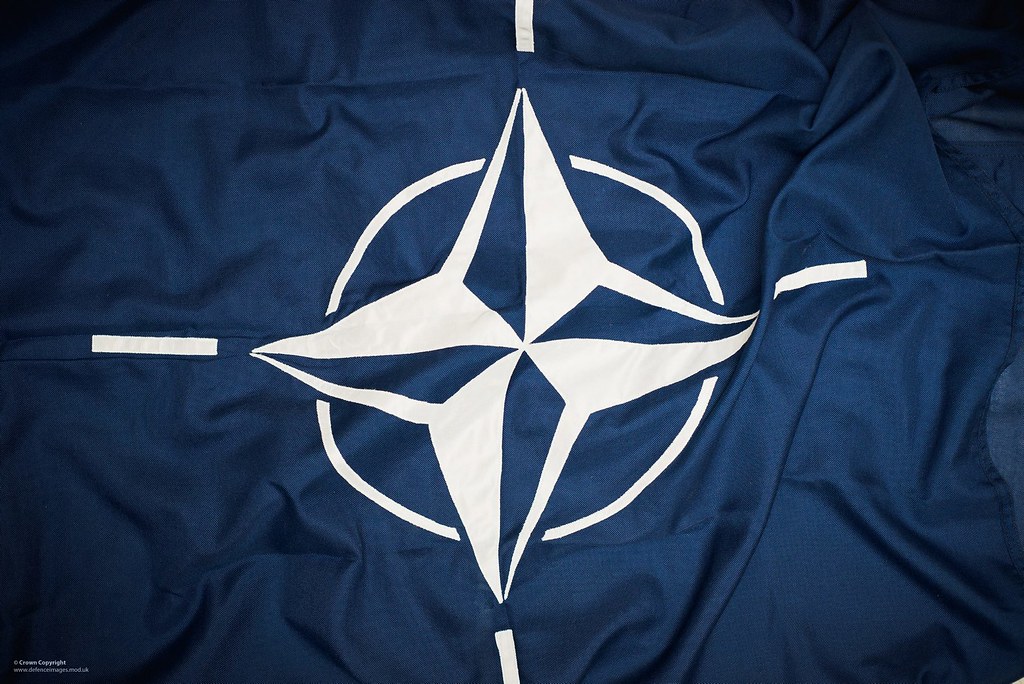
8. **United States’ Reciprocal Military Posturing**
In response to the escalating tensions and Russia’s provocative rhetoric, the United States has taken its own decisive military actions, underscoring the reciprocal nature of the current geopolitical standoff. U.S. President Donald Trump, acting upon threats of atomic warfare emanating from Kremlin insider Dmitry Medvedev, issued an order to position two American nuclear submarines nearer to Russian territory. This strategic deployment serves as a clear signal of the United States’ resolve and its readiness to counter potential aggression.
President Trump confirmed these deployments, stating on a Sunday that American nuclear submarines were now “where they have to be.” This assertion highlights a calculated move to reinforce deterrence capabilities and to project strength in the face of Moscow’s increasingly assertive posture. The positioning of such formidable assets is a direct response to what is perceived as a critical threat to international stability and security.
This robust American response comes in the wake of highly inflammatory remarks from Medvedev, who provocatively accused Trump of steering the U.S. closer to war with Russia. Despite such rhetoric, Kremlin spokesperson Dmitry Peskov, while downplaying the notion of escalation, reaffirmed Russia’s commitment to nuclear non-proliferation and stated that “There can be no winner in a nuclear war.” However, the actions of both nations clearly indicate a heightened state of military readiness and a delicate balance of power.
The United States’ reciprocal actions are not limited to military deployments. Earlier in the week, the UK announced a raft of 100 sanctions targeting Moscow’s military and energy sectors. Foreign Secretary Yvette Cooper, during her visit to Kyiv, pledged continued economic pressure on Moscow, with sanctions targeting companies supplying materials for missiles and other weapons, as well as 70 ships involved in Russia’s ‘shadow fleet’ operations. This concerted international effort demonstrates a multifaceted approach to confronting Russia’s aggressive policies.
Military equipment: Foreign policy of the United States
Categories: All Wikipedia articles in need of updating, All Wikipedia articles written in American English, All Wikipedia neutral point of view disputes, All articles needing additional references, All articles that may have off-topic sections
Summary: The officially stated goals of the foreign policy of the United States of America, including all the bureaus and offices in the United States Department of State, as mentioned in the Foreign Policy Agenda of the Department of State, are “to build and sustain a more democratic, secure, and prosperous world for the benefit of the American people and the international community”. Liberalism has been a key component of US foreign policy since its independence from Britain. Since the end of World War II, the United States has had a grand strategy which has been characterized as being oriented around primacy, “deep engagement”, and/or liberal hegemony. This strategy entails that the United States maintains military predominance; builds and maintains an extensive network of allies (exemplified by NATO, bilateral alliances and foreign US military bases); integrates other states into US-designed international institutions (such as the IMF, WTO/GATT, and World Bank); and limits the spread of nuclear weapons.
The United States House Committee on Foreign Affairs states as some of its jurisdictional goals: “export controls, including nonproliferation of nuclear technology and nuclear hardware; measures to foster commercial interaction with foreign nations and to safeguard American business abroad; international commodity agreements; international education; protection of American citizens abroad; and expulsion”. U.S. foreign policy and foreign aid have been the subject of much debate and criticism, both domestically and abroad.
Get more information about: Foreign policy of the United States
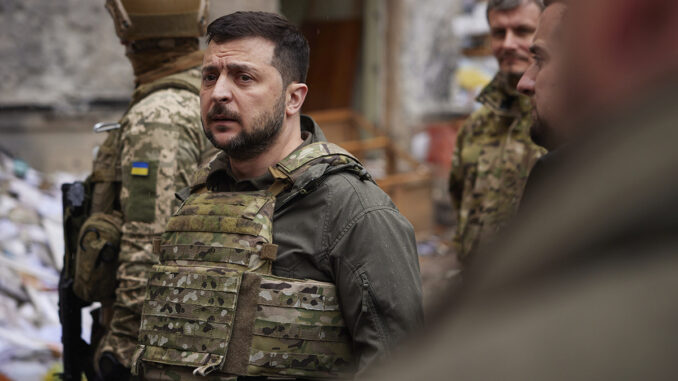
9. **Ukraine’s Resilient Counter-Offensives**
Amidst the relentless barrages and strategic deployments by Russia, Ukraine continues to demonstrate remarkable resilience and capability in its defense, actively striking back against Russian military assets. The domestic security service of Ukraine recently announced a significant success, executing a strike on Russian military installations in Crimea. This operation resulted in the destruction of a Su-30 fighter jet and damage to four other aircraft, including three Su-24 bombers.
This successful counter-offensive underscores Ukraine’s persistent ability to penetrate Russian-controlled territories and inflict substantial losses on the aggressor’s forces. Such actions are crucial not only for their immediate military impact but also for bolstering national morale and demonstrating to international partners Ukraine’s ongoing capacity to resist and fight back effectively against Russian occupation. The targeting of air assets is particularly significant, as Russia has heavily relied on its air force for offensive operations.
Ukrainian President Volodymyr Zelensky, condemning Russia’s recent attacks that claimed the lives of seven civilians and injured 13 others, including a four-month-old infant, has issued urgent calls for stronger international sanctions. He emphasized the necessity for immediate and decisive action from global partners to halt the ongoing violence, stating, “We saw the world’s response to the previous strike. But now, as Russia once again shows its utter disregard for words, we count on real action.” Zelensky’s appeals highlight the critical need for sustained international support to counter Russia’s aggression.
President Zelensky further articulated that Moscow appears to have exploited diplomatic overtures, using “the time meant for preparing a leaders-level meeting to organize new massive attacks.” He stressed that “The only way to reopen a window of opportunity for diplomacy is through tough measures against all those bankrolling the Russian army and effective sanctions against Moscow itself – banking and energy sanctions.” This stance reinforces Ukraine’s position that a robust international response, combining military support with economic pressure, is essential to compel Russia towards de-escalation and peace.
Military equipment: Counterinsurgency
Categories: All articles lacking in-text citations, All articles lacking reliable references, All articles needing additional references, All articles with style issues, All articles with unsourced statements
Summary: Counterinsurgency (COIN, or NATO spelling counter-insurgency) is “the totality of actions aimed at defeating irregular forces”. The Oxford English Dictionary defines counterinsurgency as any “military or political action taken against the activities of guerrillas or revolutionaries” and can be considered war by a state against a non-state adversary. Insurgency and counterinsurgency campaigns have been waged since ancient history. Western thought on fighting ‘small wars’ gained interest during initial periods of European colonisation, with modern thinking on counterinsurgency was developed during decolonization.
During insurgency and counterinsurgency, the distinction between civilians and combatants is often blurred. Counterinsurgency may involve attempting to win the hearts and minds of populations supporting the insurgency. Alternatively, it may be waged in an attempt to intimidate or eliminate civilian populations suspected of loyalty to the insurgency through indiscriminate violence.
Get more information about: Counterinsurgency
Read more about: Ukraine’s Daring Kursk Offensive: A Strategic Gambit Amidst Shifting Frontlines and Diplomatic Deadlock

10. **Renewed Diplomatic Initiatives**
Despite the profound military escalations and the stark warnings of global conflict, diplomatic channels, however fragile, continue to be explored in an effort to de-escalate the perilous situation. In a notable development, Donald Trump’s special envoy, Steve Witkoff, is scheduled to undertake a visit to Moscow on Wednesday. This high-level engagement signifies a continued, albeit challenging, pursuit of dialogue amidst rapidly deteriorating relations.
The visit by Mr. Witkoff is particularly significant as it precedes a critical Friday deadline established by President Trump for Russia to agree to a ceasefire and commence peace talks with Ukraine. This deadline introduces a specific timeframe for potential diplomatic progress, placing direct pressure on the Kremlin to consider a cessation of hostilities and engage in constructive negotiations. The initiative reportedly originated from the Putin administration, suggesting a possible, albeit cautious, opening for diplomatic resolution.
Such diplomatic efforts gain urgency in light of the Kremlin’s earlier signaling that peace negotiations with Ukraine were on “pause.” The willingness to engage with Trump’s envoy could indicate a nuanced shift in Moscow’s diplomatic strategy, or it could be a tactic to manage international perceptions amidst its military assertiveness. The global community will be keenly observing whether these discussions can bridge the significant chasm separating the warring parties.
The current juncture represents a critical moment in the Russia-Ukraine conflict, where nuclear rhetoric and strategic military deployments have amplified alarm across Europe and beyond. While both sides remain braced for potential escalations, the international community continues to hope that diplomatic breakthroughs, even small ones, can pave the way for a reduction in tensions before the situation spirals further out of control. The upcoming visit and the imposed deadline thus carry immense weight for the future trajectory of the conflict.
Military equipment: Diplomatic history
Categories: Articles containing French-language text, Articles with short description, Diplomacy, History of international relations, Short description is different from Wikidata
Summary: Diplomatic history deals with the history of international relations between states. Diplomatic history can be different from international relations in that the former can concern itself with the foreign policy of one state while the latter deals with relations between two or more states. Diplomatic history tends to be more concerned with the history of diplomacy, but international relations concern more with current events and creating a model intended to shed explanatory light on international politics.
Get more information about: Diplomatic history
Read more about: Kamala Harris: A Comprehensive Review of Her Defining Political Hurdles and Encounters with Security Challenges

11. **Persistent Russian Bomber Flights and NATO Interceptions**
Russia has persistently engaged in provocative long-range bomber flights over European seas, continuing its pattern of assertive military posturing and challenging NATO’s vigilance. Vladimir Putin has notably deployed ‘nuclear ready’ bombers, including two Tu-95MS strategic bombers, to the Barents and Norwegian Seas. These seas border several NATO countries, making the flights a clear message directed at the alliance.
Adding to these maneuvers, two Tu-22M3 long-range bombers, also capable of nuclear warfare, were observed flying over the Baltic Sea. This region has increasingly been referred to as “NATO lake” following the recent integration of Finland and Sweden into the alliance, making such incursions particularly pointed. These strategic flights underscore Russia’s intent to assert its presence and test the defensive readiness of its Western neighbors.
Russian military officials have characterized these flights as routine training exercises, claiming they were conducted in full compliance with international airspace rules. They indicated that the Tu-95MS aircraft were involved in drills, with the Tu-22s providing escort during a four-hour mission. However, despite Moscow’s assurances, these operations frequently elicit strong reactions from Western military officials who view them as deliberate provocations designed to probe NATO’s response capabilities and signaling Russia’s willingness to operate aggressively near allied borders.
The immediate consequence of these persistent flights is the recurrent need for NATO members to scramble their fighter jets for interception. The German air force, the Luftwaffe, confirmed deploying Eurofighter Typhoons from Latvia to intercept the Russian planes. These Typhoons subsequently “handed over” the Russian aircraft to on-duty Swedish squadrons, illustrating the coordinated, rapid response mechanisms in place across the alliance to monitor and manage such aerial incursions. The frequent requirement for such interceptions highlights the ongoing tension and the precarious nature of airspace security in the region.
Military equipment: Mikoyan MiG-29
Name: MiG-29
Caption: A Russian Air Force MiG-29S
Type: Air superiority fighter,multirole fighter
NationalOrigin: Soviet Union
DesignGroup: Mikoyan
FirstFlight: 6 October 1977
Introduction: August 1983
Status: In service
Produced: 1981–2019
PrimaryUser: Russian Aerospace Forces
MoreUsers: Indian Air Force,Bangladesh Air Force,Uzbekistan Air and Air Defence Forces,Ukrainian Air Force
NumberBuilt: >1,600
Variants: Mikoyan MiG-29M,Mikoyan MiG-29K,Mikoyan MiG-35
Categories: 1970s Soviet fighter aircraft, Aircraft first flown in 1977, Aircraft with retractable tricycle landing gear, All Wikipedia articles in need of updating, All articles containing potentially dated statements
Summary: The Mikoyan MiG-29 (Russian: Микоян МиГ-29; NATO reporting name: Fulcrum) is a twin-engine fighter aircraft designed in the Soviet Union. Developed by the Mikoyan design bureau as an air superiority fighter during the 1970s, the MiG-29, along with the larger Sukhoi Su-27, was developed to counter U.S. fighters such as the McDonnell Douglas F-15 Eagle and the General Dynamics F-16 Fighting Falcon. The MiG-29 entered service with the Soviet Air Forces in 1983.
While originally oriented towards combat against any enemy aircraft, many MiG-29s have been furnished as multirole fighters capable of performing a number of different operations, and are commonly outfitted to use a range of air-to-surface armaments and precision munitions. The MiG-29 has been manufactured in several major variants, including the multirole Mikoyan MiG-29M and the navalised Mikoyan MiG-29K; the most advanced member of the family to date is the Mikoyan MiG-35. Later models frequently feature improved engines, glass cockpits with HOTAS (“hands-on-throttle-and-stick”)-compatible flight controls, modern radar and infrared search and track (IRST) sensors, and considerably increased fuel capacity; some aircraft have also been equipped for aerial refueling.
Following the dissolution of the Soviet Union, the militaries of multiple ex-Soviet republics have continued to operate the MiG-29, the largest of them being the Russian Aerospace Forces. The Russian Aerospace Forces wanted to upgrade its existing fleet to the modernised MiG-29SMT configuration, but financial difficulties have limited deliveries. The MiG-29 has also been a popular export aircraft; more than 30 nations either operate or have operated the aircraft. As of 2024 Flight Global estimates that 809 MiG-29s, of all types, are in service with air forces, making it the 5th most common active fighter.
Get more information about: Mikoyan MiG-29
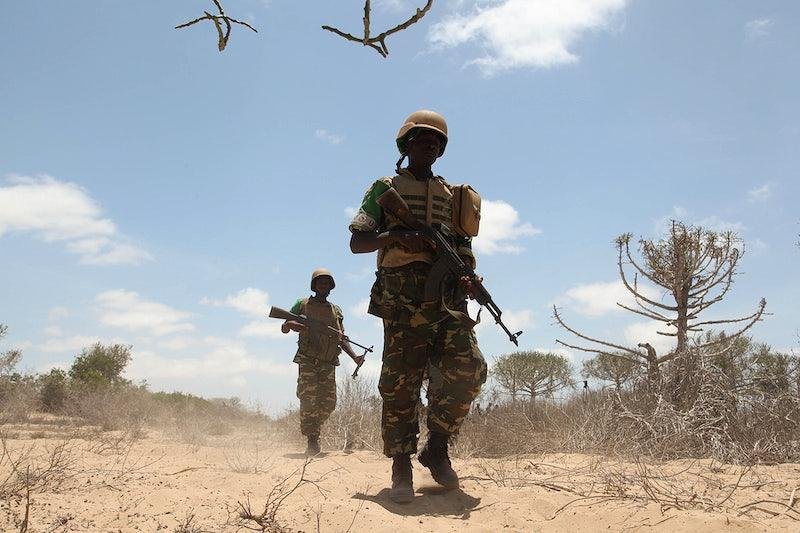
12. **The Dangerous Rhetoric Surrounding a No-Fly Zone**
The discussion surrounding a potential no-fly zone over parts of Ukraine has introduced a new and perilous dimension to the conflict, drawing stark warnings from Russian officials about direct confrontation with NATO. Poland’s foreign minister, Radosław Sikorski, recently advocated for NATO to begin shooting down Russian drones and missiles over Ukrainian territory, a proposition that found strong support from Kyiv and resonated with calls for greater protection of Ukrainian airspace.
Mr. Sikorski articulated that targeting Russian drones over Ukraine “will be beneficial” for Western countries, suggesting that such a measure would deter further attacks and protect civilians. He acknowledged, however, that this is “not a decision that Poland can make alone, only together with its allies,” highlighting the need for a unified NATO consensus on a matter with such profound implications. This debate underscores the alliance’s challenge in balancing humanitarian concerns with the risks of direct military engagement.
The concept of a no-fly zone, even a limited one, immediately elicited a severe backlash from Moscow. Dmitry Medvedev, a prominent ally of President Putin and a former Russian president and premier, issued an unequivocal warning. He stated, “Seriously, the implementation of the provocative idea of Kyiv and other idiots about creating a ‘no-fly zone’ over Ukraine, and the ability for NATO countries to shoot down our UAVs, will mean only one thing – a war between NATO and Russia.” This explicit threat underlines Russia’s interpretation of such an action as a direct act of war.
Moscow consistently portrays any direct intervention by NATO in Ukrainian airspace, including the enforcement of a no-fly zone, as the alliance becoming actively and directly involved in the war. This rhetoric significantly raises the stakes, transforming what some perceive as a defensive measure into a potential trigger for a wider, devastating conflict between nuclear-armed powers. The implications of such a decision are therefore among the most critical and dangerous facing the international community.
Military equipment: Fall of the Assad regime
Title: Fall of the Assad regime
Partof: 2024 Syrian opposition offensives
Perrow: 1/2/2
TotalWidth: 300
Border: infobox
Caption: Rebels at a statue of Bassel al-Assad, later pulled down,T-72 abandoned by pro-regime forces,A destroyed image of Bashar al-Assad,Opposition and Saudi Arabian flags displayed on a Syrian Army tank,Ahmed al-Sharaa speaks at Umayyad Mosque
Date: Sun Dec 08 2024 00:00:00 GMT-0800 (Pacific Standard Time)
Location: Syria
Organisers: Syrian opposition (2011–2024)
Outcome: Syrian Civil War,Bashar al-Assad,Ba’athist Syria,Syrian opposition,Syrian caretaker government,Israeli invasion of Syria (2024-present),Western Syria clashes
Categories: 2020s in Syrian politics, All articles containing potentially dated statements, Articles containing potentially dated statements from 2022, Articles with short description, Assad family
Summary: On 8 December 2024, the Assad regime collapsed during a major offensive by opposition forces. The offensive was spearheaded by Hay’at Tahrir al-Sham (HTS) and supported mainly by the Turkish-backed Syrian National Army as part of the ongoing Syrian civil war that began with the Syrian revolution in 2011. The capture of Syria’s capital, Damascus, marked the end of the Assad family’s rule, which had governed Syria as a hereditary totalitarian dictatorship since Hafez al-Assad assumed power in 1971 after a successful coup d’état.
As a rebel coalition advanced towards Damascus, reports emerged that Bashar al-Assad had fled the capital aboard a plane to Russia, where he joined his family, already in exile, and was granted asylum. Following his departure, opposition forces declared victory on state television. Concurrently, the Russian Ministry of Foreign Affairs confirmed Assad’s resignation and departure from Syria.
The swift fall of the Assad regime was met with shock and surprise throughout the world, including with the Syrian people. Syrian opposition fighters were reportedly surprised at how quickly the Syrian government had collapsed in the wake of their offensive. Analysts viewed the event as a significant blow to Iran’s Axis of Resistance due to their use of Assad’s Syria as a waypoint to supply arms and supplies to Hezbollah, a key ally. Several Western academics and geopolitical commentators likened the regime’s collapse to the fall of the Berlin Wall in 1989, comparing the broader geopolitical shifts that occurred after both events.
Get more information about: Fall of the Assad regime
As the world grapples with this perilous convergence of military escalation, diplomatic impasses, and dangerous rhetoric, the path forward remains fraught with uncertainty. The sustained military pressures from Russia, met with robust defensive actions from NATO and resilient counter-offensives from Ukraine, paint a grim picture of a conflict far from resolution. With nuclear-capable assets positioned closer to Europe and the ominous specter of a direct confrontation between major powers, the global community is urged to seek every avenue for de-escalation and dialogue, lest the abyss of a Third World War, as warned by the United Nations, indeed prove to be the world’s next grim reality.



